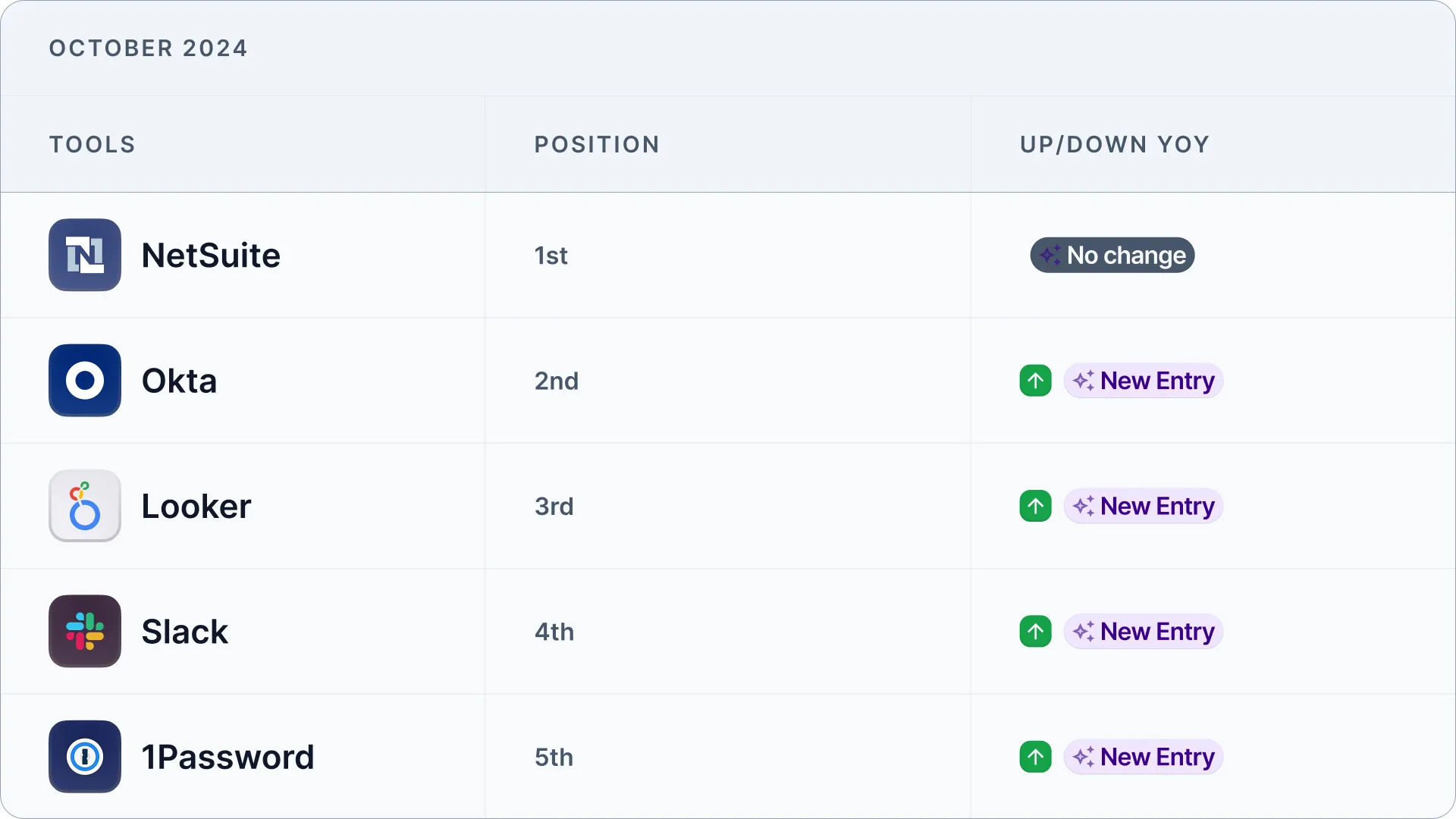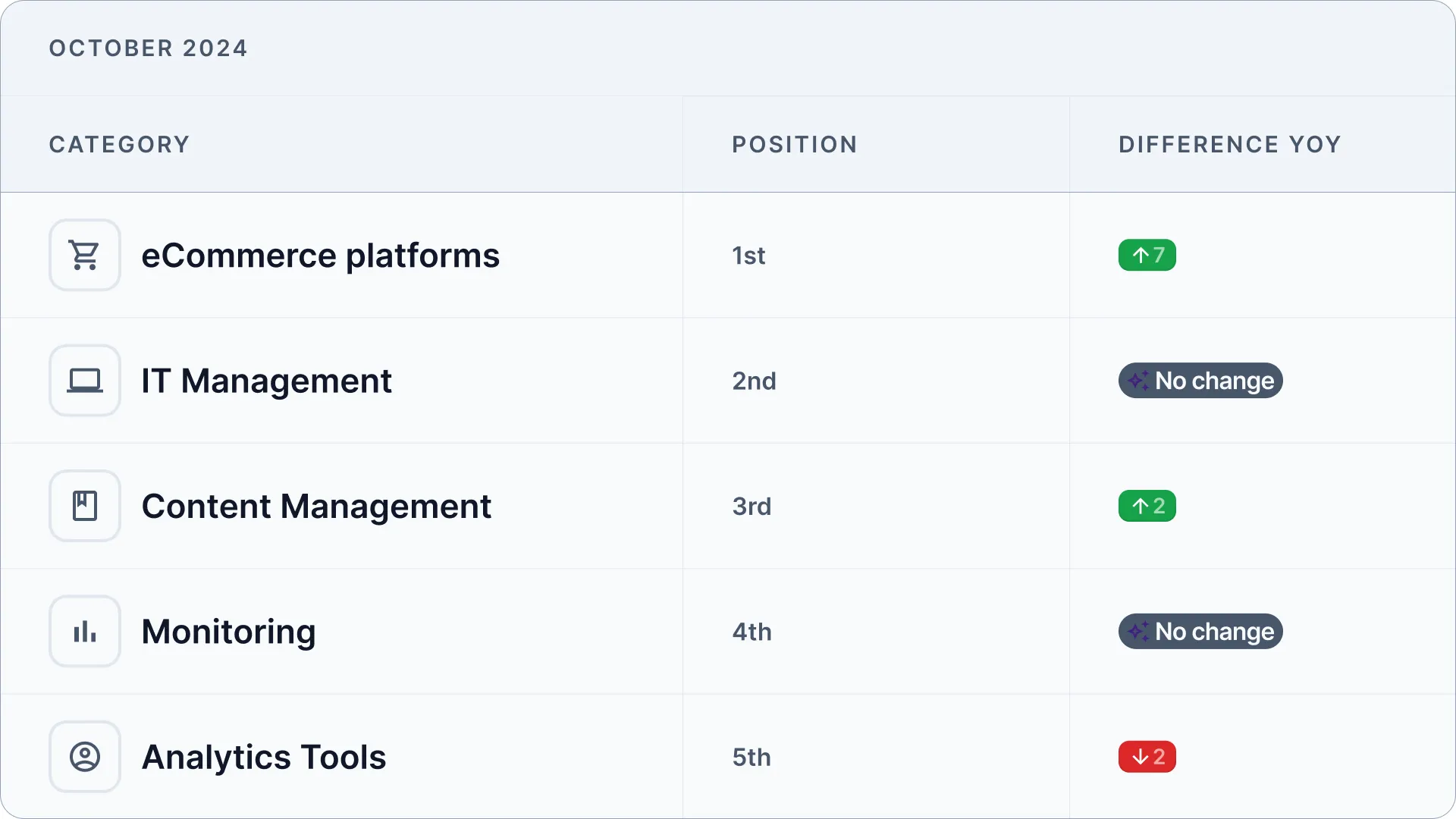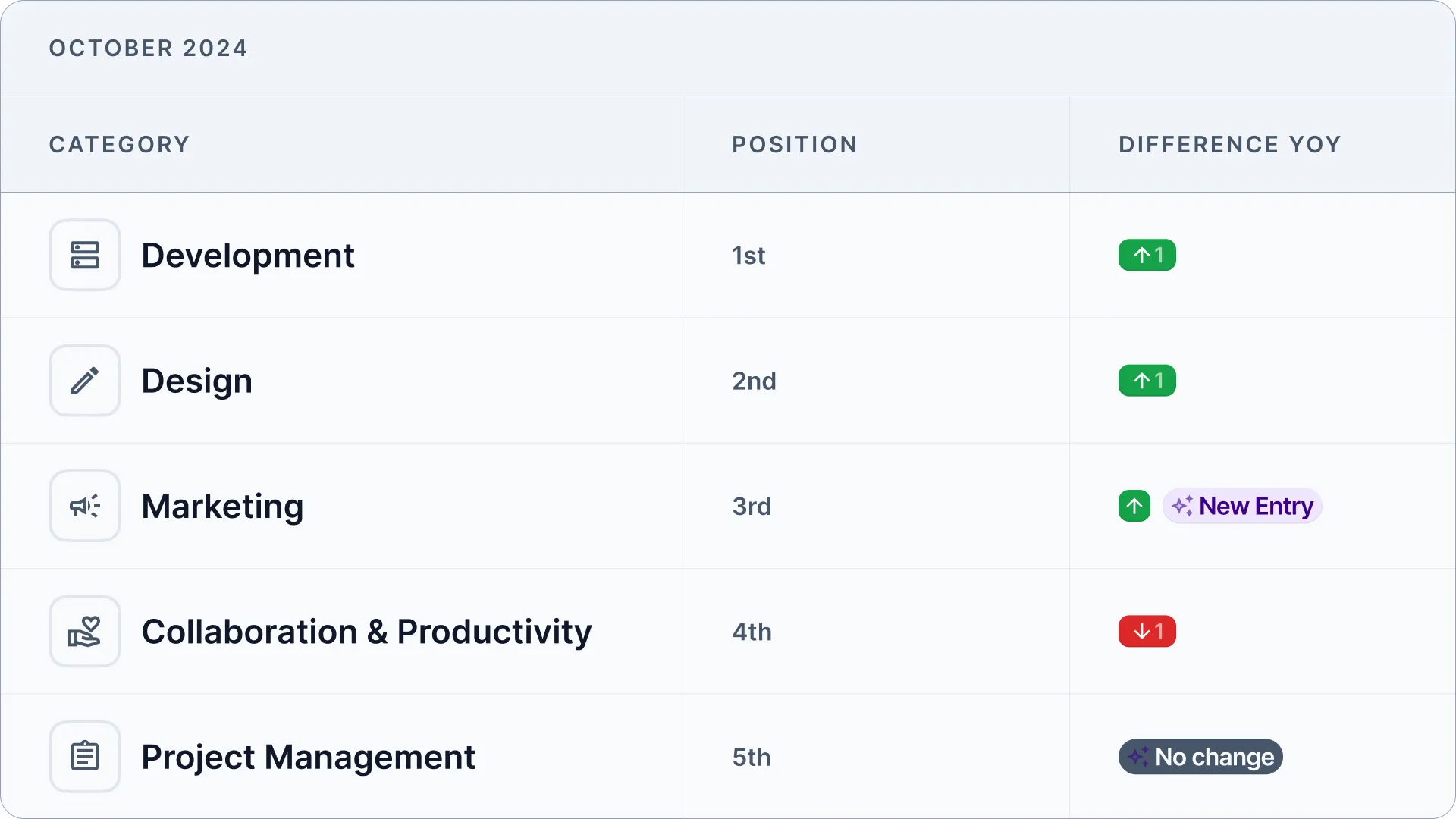Introduction
One line item that is set to be particularly challenging in your budgeting cycle this year is SaaS spend. While software tools are integral to driving a company’s resilience, growth, and profitability, they can quietly erode your bottom line.
Software spend has soared to an eye-watering $8,800 per employee per annum (up by 27.5% YoY) and SaaS inflation currently stands at an alarming 12.5%, far outpacing US headline inflation. Businesses are also grappling with changing SaaS pricing models, which are shifting from ‘usage-based’ to ‘user-based’ and even ‘outcome-based’ due to rapid AI adoption.

.webp)
With department heads lobbying for new tools to fuel their 2025 plans, how can CFOs control costs? What are the best tools to invest in? And how can businesses identify blind spots?
To help answer these questions, we’ve analyzed our global dataset of hundreds of customers’ SaaS investments and tech stacks, along with ‘behind the scenes’ data on 16,000+ software vendors’ contract structures, terms and tactics.
We’ll dig into:
“If what businesses want in 2025 is growth and stability, then scrutinizing software spend is essential. The more information you collect in the budgeting process, the more you'll spot opportunities for efficiency.”
Stickiest SaaS Tools
The tools that finance and procurement leaders can be most confident in for 2025
There are an array of vendors to choose from in the $200 billion SaaS market, but some software tools are consistently depended upon.
Understanding which SaaS tools the market deems most reliable allows you to include them in your budget with confidence.
Focus then shifts to how to control their costs, such as planning for renewal negotiations early, and avoiding any price uplifts built into the contract.
“We were bitten in Q4 because we sent a huge email campaign that triggered an uplift in our email platform contract tier, but we didn’t see the cost implication until our annual renewal. You can bet they wanted that extra revenue, but we'd have got better terms if we'd talked to them in advance.”
Top SaaS vendors by renewals 2024

Lessons for 2025 budgeting
Changes to the top renewing SaaS tools between Q3 2024 and Q3 2023 reveal deeper insights into operational priorities:
NetSuite reigns supreme
Netsuite’s continued leadership position is likely down to its versatility in managing core business functions, as explained by Matt Barnard, VP of Finance at Vertice:
“In 2024, businesses entered a phase of stack overhaul, with suites being favoured over point solutions”
Increased investment in security
The fact that 2 of the top 5 stickiest apps are in the security category highlights an important lesson for CFOs: deep investment in security is expected and is no longer the ‘optional insurance policy’.
Slack edges ahead in the collaboration race
Slack appears to be claiming a dominant position as it expands its customer base.
Collaboration tools are either loved or hated, but Slack’s slick functionality and ease-of-use appear to have given it the edge.
More focus on business intelligence
The rising prominence of Looker demonstrates to the growing importance of building a data-driven culture. That it forms part of the Google Cloud platform will have propelled its capabilities and market reach.
Stickiness by category
Understanding which categories typically see the highest rate of renewal can help you understand where you should expect to see stability versus experimentation.
Top SaaS categories by renewals 2024

Lessons for 2025 budgeting
Shifting CRM providers is the new norm
Businesses have historically had little flexibility to switch CRM tools because of the pain and resources involved in the migration.
Now, it’s much easier as each of the major vendors has worked hard to simplify and even automate much of the migration process, so more companies are making the switch.
Are your ecommerce contracts rightsized?
For the eCommerce sector, platforms such as Shopify, BigCommerce, Magento and similar are the foundations upon which the whole business is built.
It’s no surprise that multi-functional, versatile and reliable eCommerce platforms tools will find themselves rarely swapped out. Additionally, companies typically need third-party support to migrate to new platforms.
Given their stickiness, eCommerce CFOs need to pay close attention to how well-thought out the contract is - especially as eCommerce is so prone to unpredictable peaks and troughs.
“Communicate your likely seasonal requirements as early as possible with internal stakeholders and ask software vendors about what they can do to support seasonal uplifts in traffic.”
Highest number of cancellations
Where CFOs and procurement leaders need to be extra wary in 2025 SaaS stacks
Cancellation patterns are revealing key areas where finance leaders ought to place greatest budgeting scrutiny.
Top SaaS categories by cancellations 2024
.webp)
Lessons for 2025 budgeting
Sales tools are on the chopping block
Sales tools are often marketed as "silver bullets" to fix stagnant sales growth.
However, their effectiveness usually depends on having solid underlying processes, clean data, and sufficient resources in place. Without these foundations, they struggle to deliver results.
“It's essential to collaborate closely with your CRO to assess whether the organization is truly ready for new sales tools. By identifying and addressing the gaps in your sales operations before making an investment, you'll ensure a more strategic, long-term decision that maximizes value.”
ecommerce tools continue to be consolidated
How can eCommerce SaaS be both the most sticky, and the most prone to cancellations?
Historically, eCommerce has been one of the industries most likely to have bloated SaaS stacks as they experimented with new tools to drive sales and introduce new user experience functionality.
But now, eCommerce SaaS stacks are shrinking. There is widespread consolidation in the eCommerce SaaS market, where the biggest players are both acquiring successful apps and building their own highly-competitive additional functionality.
IT management
With vendor price and performance under more scrutiny, IT teams that rushed to expand their tech stacks during COVID-19 have entered a phase of consolidation.
Gerric Chaplin, VP of Cloud Engineering at Vertice, explains:
“Hit by price increases over the past few years, tech teams are increasingly switching to open-source software and adopting more automation to reduce their SaaS licenses.”
Most underutilized categories
The SaaS categories that are prime for right-sizing in 2025
In budgeting season, it’s easy to fall into the trap of evaluating a tech stack based on how much it costs and the perceived ROI. But so many businesses don’t factor in utilization rates, which reveal how much a tool is actually being used.
Our data suggests that organizations are under-utilizing their SaaS applications by an average of 33%, meaning that based on typical app numbers and spend, companies with over 600 employees could be wasting close to $1 million on underused licenses and features.
Top SaaS categories by underutilization 2024

Lessons for 2025 budgeting
Marketing is the biggest culprit for underutilization
Moving from 4th to 1st place in 12 months, this sharp rise suggests two things: that marketing teams have been prone to expanding their tech stacks beyond the department’s capabilities, and that their key vendors have expanded their functionality and created overlap.
"CFOs should work closely with CMOs to evaluate marketing software needs.
Avoid ruthlessly cutting tools simply to fix the balance sheet; take a constructive and supportive approach by digging into usage metrics and feature sets.”
Security warnings
Investment in security tools may be on the up, but rising levels of underuse suggests that organizations are either buying software with functionality they don’t need, or in the case of end-user security tools, IT teams are struggling to get the employee buy-in they need to get the tools adopted.
AI boom or bust?
Investment in AI has increased by an extraordinary 65% YoY (the highest proportional increase of any category by far) but these figures highlight the risks of rapid AI adoption without a clear business case.
“Software underutilization is a silent killer that often goes unnoticed.
And in the case of AI tools, this is likely a classic case of grand ambitions outpacing the reality of the business’ capabilities - perhaps the use cases are not being well enough thought through in advance, or the data and infrastructure is not in a state where it can be easily manipulated by the tools.”
Most duplicated Categories
SaaS categories with the most potential for consolidation
With department heads being given increased autonomy to purchase software, it’s becoming more common for organizations to adopt a number of tools that fulfill the same function - creating not just overspend and wastage, but also security and compliance issues.
The 2025 budgeting process is an opportunity to take stock of the tools you're paying for and their capabilities.
With SaaS vendors seeking to become one-stop-shops, their functionality is invariably broadening, and may overlap with other tools.
Top SaaS categories by duplication 2024

Lessons for 2025 budgeting
Personal preferences likely to be causing duplication:
For the second year in a row, Collaboration and Productivity tools are in the ‘most duplicated’ top 5, joined this year by Project Management tools.
Both of these categories are often easy to adopt, with many offering free or low-cost options - a classic shadow IT use case.
In fact, it’s believed that as much as 40% of SaaS spend takes place out of sight of the IT department.
Marketing's Duplication problem:
As shown above, marketing departments not only underutilize software tools but also have one of the highest rates of duplication.
Plus, the evolution of the marketing department's responsibilities and influence and close collaboration with other departments creates further duplication risk - and finance and procurement need to step in at the high level to help avoid departments each paying for the same capability.
“Marketing’s SaaS problem is notorious. Plenty of marketing leaders who have bought in new technologies to deliver ambitious plans, but then for one reason or another see their plans stalled.
There’s also the problem of how many vendors are expanding their capabilities beyond their core function, and overlapping with others in the stack, creating duplicated spend”
Key takeaways
The crucial, concise information finance and procurement leaders need for 2025
The stickiest tools indicate the safest bets for 2025 SaaS investment
When your department heads are seeking their renewal in 2025, the question is less about whether to proceed (though this needs to be checked too) and more about how.
Make sure your contract is built to accommodate the true future path for your business - for instance how your user numbers may change during the contract term, or how seasonality affects your usage of the tool, or even simply whether the contract includes only the functionality you will truly require.
Prioritize the ‘hotspots’ for SaaS overspend.
Data from 2024 shows that Marketing is a category that could benefit from some serious fine-tuning, but that’s certainly not the only department.
Dedicate time in your budgeting sessions with every team to understanding SaaS usage, headcount changes, contractual features and future projects, and make sure the SaaS requests are realistic.
Understand each department’s goals.
Partner with each department leader to understand their strategic aims, the obstacles to success, and how each tool contributes to this purpose.
Achieving this means you can make more sound financial decisions and align investment into technology with departmental / company goals.
Start your SaaS audit now.
The earlier you start, the more likely you are to achieve significant savings.
Map out renewal dates for each vendor, and work with procurement and department leaders to start auditing their SaaS needs.
Get ahead of ‘Wild West’ AI adoption.
All too often, easy adoption + hype = underutilization. Which means wasted spend.
Companies whose planning or data infrastructures are not fully prepared to use AI tools to their fullest may see prices soar and free plans disappear before they have seen any benefit.
Don’t let your teams be drawn into contracts before they are truly ready to adopt.
Data is key.
To budget effectively, CFOs need to understand what each tool is being used for and how much it's being used.
Regular analysis of tech stack utilization helps identify the need for more suitable solutions and reduces SaaS bloat.
Watch out for pricing model changes.
With a trend shift from user-based pricing models to usage-based pricing models, it’ll be more important than ever to have a firm handle on tools’ costs, contract terms, and crucially how usage is determined.
“As CFOs, we have to keep one foot on the brake and the other hovering over the accelerator for when we see an opportunity. We can’t spend our way to growth anymore - it’s about efficient growth.”
Explore more SaaS vendors
Use Vertice to get the best pricing on any software your business needs, and save on annual renewals for your existing contracts.












.webp)



































